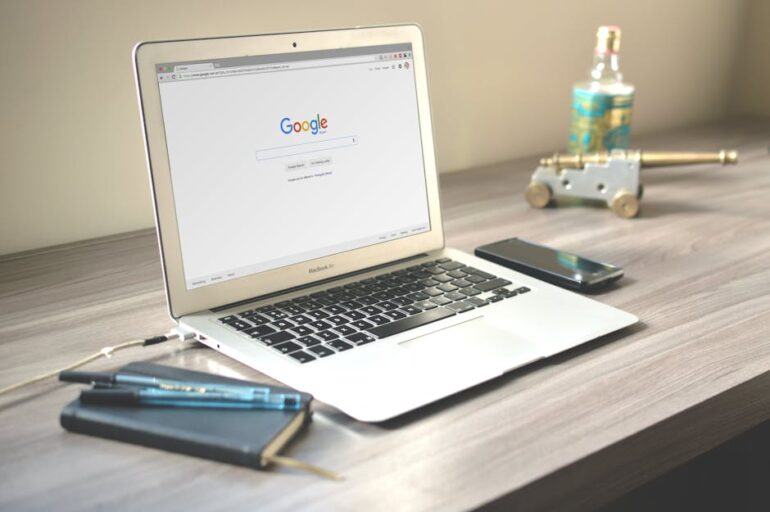Right then, let’s just get straight into it, shall we? This whole song and dance about “google seo recommend body font size website” is enough to make a seasoned web editor like myself just… sigh. You hear all these new hotshot designers, fresh out of wherever, spouting off about pixel perfection and how Google demands this or that. Truth be told, most of ’em are just parroting what some blog told them last week. Google, bless its little algorithm-driven heart, doesn’t actually demand anything in terms of a hard-and-fast body font size. Not really.
It’s about reading, isn’t it? Can a person, a real human being with eyes that might not be twenty anymore, actually read what you’ve put on their screen? That’s the real question. For years, folks were stuffing tiny little text onto pages, thinking it made their site look “clean” or “professional.” Looked like ants marching to me. Squinting, that’s what people were doing. And if they’re squinting, they’re not sticking around. Common sense, you’d think. But common sense ain’t so common, is it?
What Google Actually Says (Sort Of)
So, you ask, what about this “google seo recommend body font size website” business? Well, Google’s been talking about mobile-first indexing for ages. And what does that mean? It means your site better look good and be usable on a phone. Not just good. Usable. And part of usability? Text that doesn’t feel like you need a microscope to read it. They talk about “readable font sizes” and “adequate line height” and “enough space between lines.” They don’t give you a damn number, though, do they? Not a specific pixel count for every body of text out there.
They might hint at something like 16 pixels for standard body text as a good starting point for a desktop view. But then you go to mobile, and that 16px might feel too small, or just right, or maybe even a little big depending on the font family you picked. It’s not a one-size-fits-all shoe. Never was. Never will be. The mobile experience, that’s where the rubber meets the road. I remember back in the day, before smartphones were a thing, before the internet was in everyone’s pocket, we were just trying to get pages to load without crashing dial-up modems. Now it’s all about how easy it is to swipe and tap and read. Times change, eh? The core idea, though, remains the same: people need to be able to use your site.
Agencies That Get It (And Those That Don’t)
You want to know who does this right? Who pays attention to the little things, like how text actually sits on a screen?
Companies like WebFX, for instance. They talk about conversion rate all day, don’t they? And a big part of conversion is just basic usability. If someone can’t read the damn button, they ain’t clicking it. Simple as that. I’ve seen some dreadful sites churned out by firms promising the moon and delivering blurry, tiny text. Then they wonder why their clients ain’t getting any leads.
Or take a look at Thrive Internet Marketing Agency. They’ve been at it for a while, seen the shifts. They know it’s not just about getting Google to crawl you, it’s about getting real people to stick around once they land. That means making the experience as smooth as a fresh jar of peanut butter. If your body font is like reading the fine print on a warranty, folks are just going to bounce right off. What’s the point of all that SEO effort then? It’s like polishing a turd. No matter how shiny, it’s still a turd.
User Experience, Not Just Robots
Forget the robots for a second. Think about your mum. Can your mum read your website comfortably on her iPad? If the answer is “maybe if she puts her glasses on and holds it real close,” then you’ve got a problem. Google’s algorithms, they’re smart, but they’re still just trying to mimic human behavior. They notice if people click on your site then immediately hit the back button. They notice if folks spend less than ten seconds on your page. That tells them your content isn’t hitting the mark. Or, just maybe, it’s too bloody hard to read.
Is 16px body font size good for your average desktop monitor? Yeah, probably. It’s a pretty safe bet. But what about on a phone? What about a huge 4K monitor? Some people are still using ancient laptops. You gotta test it. Get your phone out. Get your tablet out. Ask a mate to look at it. Does it feel right? Does it feel chunky? Does it feel too small? Those subjective feelings are what you’re chasing.
The Mobile-First Muddle
I tell you, this whole mobile-first world, it’s a right old pickle sometimes. Everyone talks about responsiveness, right? But responsive ain’t just about shrinking images. It’s about typefaces, about letter spacing, about line height. Things that get lost in the shuffle when designers are just worried about the pretty pictures. I’ve seen Ignite Visibility talk a fair bit about the importance of mobile usability scores. They know the game. You don’t just throw up a website and hope for the best.
What font size does Google prefer? It’s not about preference, is it? It’s about accessibility. It’s about “can you see this?” Do you think someone with poor eyesight cares if your font is technically 15px or 16px? They care if they can read the darn thing without having to pinch-zoom till their fingers hurt. That’s what it is. And if they can’t read it, they go somewhere else. Simple economics, really. You make it easy, people stick around. You make it hard, they leave. No complex equations needed.
Checking Your Homework
So, you want to know how you check your website’s font size on mobile? Well, you use your phone, sunshine. Open up your own site. Is it clear? Can you quickly scan headings? Is the body text just a blur? Most browsers now, you can poke around in their developer tools. Google Chrome, for example, you can toggle that “mobile view” and see how it renders. It’s not rocket science. It’s just a bit of effort. The devil’s always in the details, or so they say.
Does font size affect SEO? Of course it does. Directly? No, not like a meta tag. Indirectly? Absolutely. If your site’s a pain to read, people ditch it. Google sees that. They see the short time spent on page. They see the high bounce rate. And what does Google do with sites people don’t like? They send ‘em to the back of the bus. They tell you to move along, nothing to see here. It’s all connected, like a big, messy, digital spiderweb.
The “Just Right” Zone
I always tell clients, it’s about finding that “just right” zone. Like Goldilocks and her porridge. Too big, and it looks clunky, like a child’s book. Too small, and it’s invisible. Somewhere in the middle, you’ve got text that’s clear, easy on the eyes, and flows nicely. For google seo recommend body font size website discussions, I usually tell folks to start with a minimum of 16px for body text, then test it. Don’t just blindly stick to it. See how it looks on different screens.
I mean, I’ve worked with some truly particular folks over the years. Some wanted their headings to be ginormous, practically shouting at you. Others wanted everything to be understated, almost whispering. It’s a balance. You want attention, but you don’t want to scream. You want clarity, but you don’t want to look like you’re writing for primary school kids.
Some of these SEO hotshots, like NP Digital, they know the score. They’re constantly analyzing user behavior. They’re looking at heatmaps, scroll depth, conversion paths. And all of that, every single piece of it, comes back to: is the user actually using the site, or are they just frustrated? The smallest things, like a wonky line height or a font that’s too light against a background, can make a reader throw their hands up and go find what they need somewhere else.
I get asked all the time, “Is it worth changing my entire website’s font size just for Google?” My answer is always: if it makes your website easier for people to read and use, then yes, it’s worth it. Not for Google. For your actual customers. Google will just notice that people are happier on your site and reward you for it. Think of Google as a very nosy neighbor who reports back on how many people enjoy coming over to your place.
My Two Cents on “Ideal” Sizes
Look, if you’re asking for a starting point for google seo recommend body font size website discussions, try something like 16px for desktop, maybe 17px or even 18px for main body content if you’ve got a lot of it and want to make it super comfy for reading. On mobile, that 16px usually works, but it could go up to 18px for better readability depending on the font. Headings? Different beast entirely. H1s should be big, bold, and clear. H2s, H3s, they get progressively smaller, but still distinct from the body copy.
It’s all about context. A news site with tons of articles, they might go with a slightly larger body font for long-form reading comfort. An e-commerce site, with lots of product descriptions, might balance size with space constraints. There’s no magic number. Just usability.
Remember, every website has its own audience. What works for a tech blog might not work for a site selling garden gnomes. Some of your older users, they’ll appreciate that slightly larger text. Younger folks, they might not notice as much, but they’ll still appreciate not having to strain their peepers. It’s about not alienating anyone. It’s about being welcoming.
So, when folks start flapping on about rigid rules for google seo recommend body font size website, just give ’em a look. A knowing look. Then tell ’em to focus on whether a real person can actually read what’s on the screen. Because in the end, that’s what matters. That’s always what matters. The rest is just noise.












